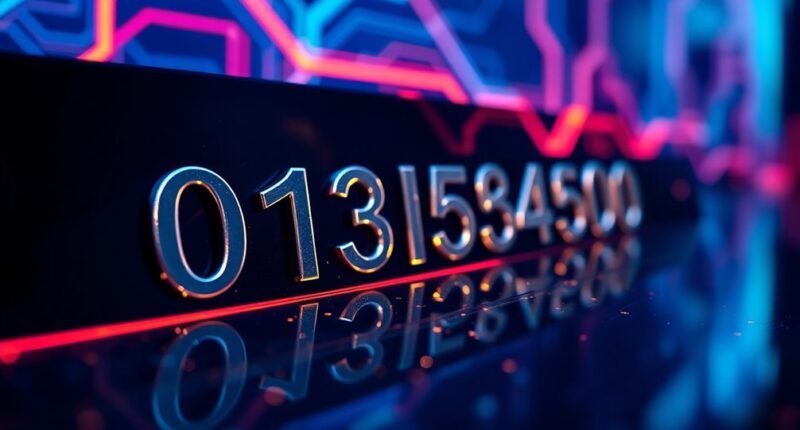Navigating blockchain addresses is key to managing your digital assets effectively. Each address starts with a unique private key and is generated through a series of cryptographic processes. You'll encounter different types, such as standard addresses, multi-signature addresses, and Bech32 addresses, each serving distinct purposes. Remember, controlling your private key is essential for security. Mistakes in entering an address can lead to irreversible losses. Understanding the pros and cons, along with security vulnerabilities, is crucial for safe transactions. Explore further to uncover more insights on optimizing your experience in the blockchain world.
Key Takeaways
- Blockchain addresses are generated from private keys, ensuring secure ownership and transactions within the network.
- Different types of addresses, such as legacy, SegWit, and Bech32, cater to various transaction needs and efficiency.
- Address management is crucial; controlling private keys is essential for secure cryptocurrency transactions and preventing loss of funds.
- Anonymity in blockchain addresses provides user privacy, but address reuse can raise concerns about traceability.
- Mitigate security vulnerabilities by double-checking addresses, educating about potential scams, and employing multi-factor authentication.
Address Structure Overview
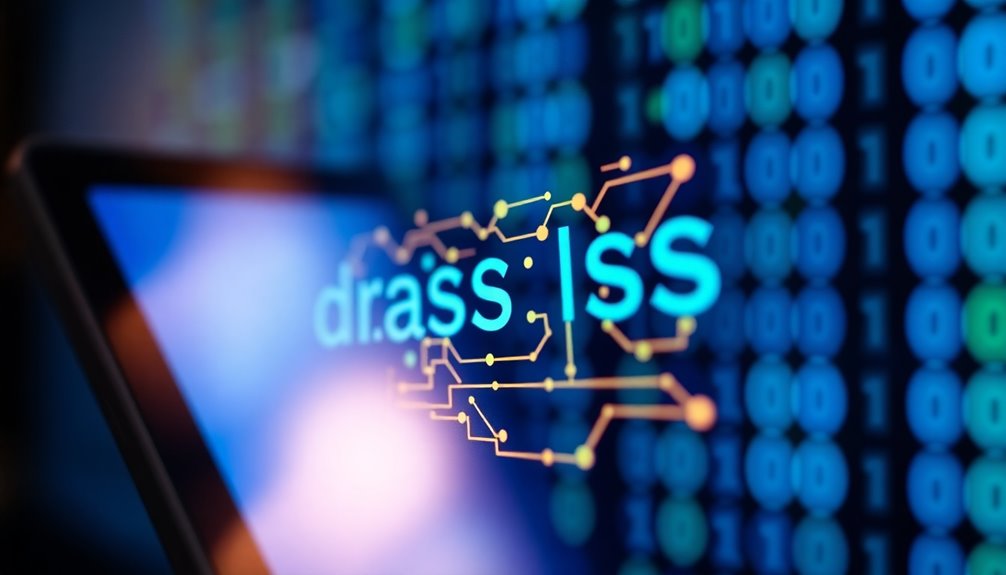
When you dive into the world of blockchain, understanding the address structure is crucial for managing your cryptocurrency safely.
Address generation starts with creating a private key, a random string that secures your ownership. From this, a public key is derived using a mathematical algorithm, then hashed to form your final address. This address is unique to your wallet and often includes a checksum to prevent errors. Wallet addresses serve as the primary means for sending and receiving cryptocurrencies, making their structure essential for transactions.
Different cryptocurrencies have specific formats; for instance, Bitcoin addresses begin with "1" or "3," while Ethereum addresses start with "0x."
Always remember, it's safe to share your public address for receiving funds, but keep your private key secret to protect against theft.
Understanding Blockchain Address Basics
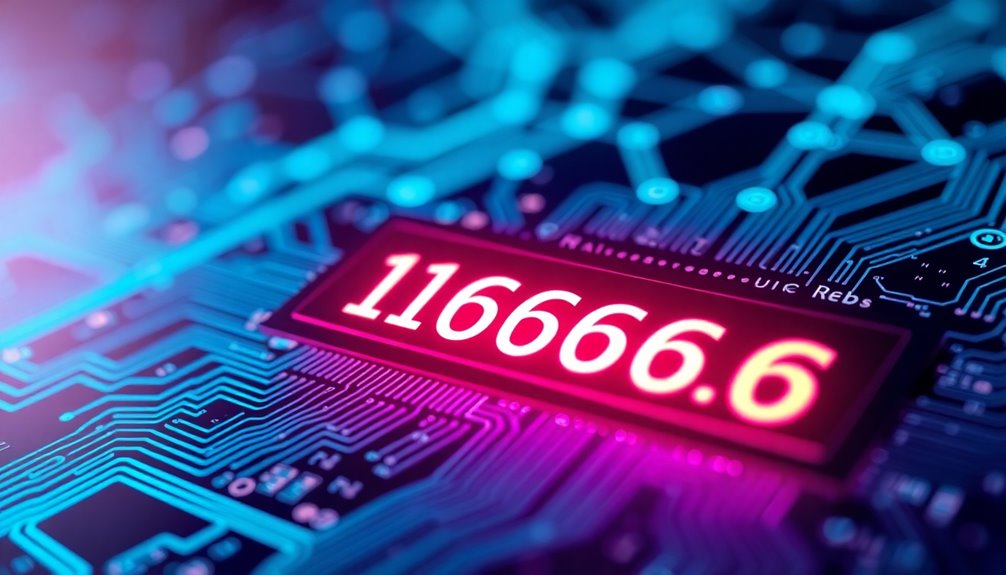
Blockchain addresses are essential for navigating the cryptocurrency landscape, as they uniquely identify accounts and facilitate transactions within the network. Each address serves as a unique identifier, ensuring that transactions are processed correctly between peers. Inputting the wallet address accurately is crucial since blockchain transactions are immutable; a mistake can lead to lost funds. You'll need the recipient's address to ensure the assets go to the right person. Additionally, addresses are derived from cryptographic keys, offering a layer of privacy while maintaining security. Different types of addresses exist, like public key and Bech32 addresses, each with unique characteristics. Understanding control of private keys is vital for secure and effective cryptocurrency transactions.
Address Generation Process Explained
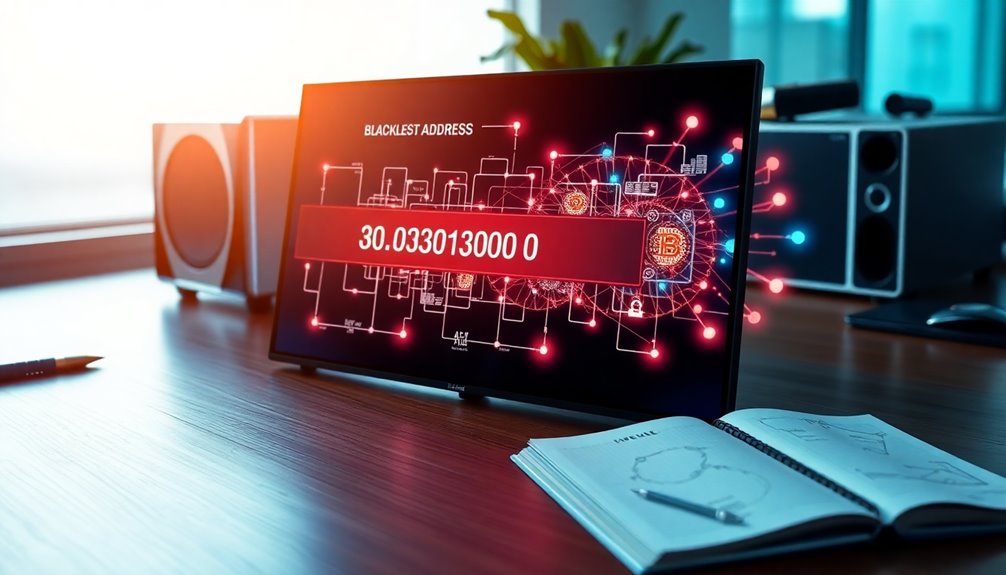
Generating a blockchain address involves a series of critical steps that ensure security and uniqueness.
First, you create a private key, a randomly generated 256-bit string that remains secret. From this private key, you derive a public key using the Elliptic Curve Digital Signature Algorithm (ECDSA) on the secp256k1 curve. It is essential to use high-quality random number generators when creating the private key to ensure its security.
Next, you hash the public key with SHA-256 and then RIPEMD-160, adding a version byte for context. After that, you perform another SHA-256 to generate a checksum, which you attach to the hash.
Finally, you encode this data in Base58 to create the final blockchain address, which can be a legacy, SegWit, or Bech32 address, depending on the format chosen.
Pros and Cons Summary

Understanding the address generation process lays the foundation for evaluating the advantages and disadvantages of blockchain addresses. By delving into how addresses are created and structured, we can appreciate their role in ensuring secure transactions and user privacy. Furthermore, understanding blockchain addresses enables users to navigate the complexities of different blockchain protocols and makes informed decisions about security best practices. This knowledge not only enhances the user experience but also fosters a greater sense of trust in the technology itself.
On the upside, blockchain addresses offer robust security through cryptographic keys, ensuring your digital assets remain protected. You gain control over your assets, enabling peer-to-peer transactions without intermediaries, making transactions faster and cheaper. The anonymity provided by pseudonymous transactions helps maintain your privacy. Additionally, blockchain addresses are generated using cryptographic algorithms, which enhances security in the digital asset ecosystem.
However, there are drawbacks. Transactions are irreversible, meaning if you send assets to the wrong address, they're lost forever. The complexity of managing addresses can be overwhelming, requiring technical knowledge and regular security updates.
Lastly, privacy concerns arise from address reuse and sophisticated analysis techniques that can expose your transaction history. Balancing these pros and cons is essential for informed blockchain use.
Address Types vs. Usability
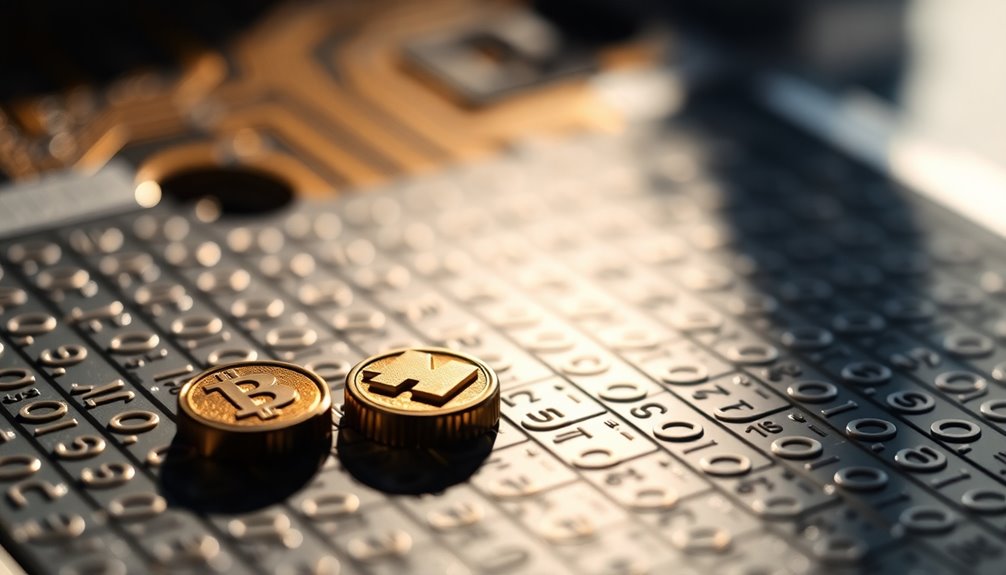
When you explore different types of blockchain addresses, you'll find that usability varies significantly based on their characteristics and intended functions.
Legacy addresses (starting with '1') are simple but less efficient, making them suitable for basic transactions, albeit with higher fees.
In contrast, Nested SegWit addresses ('3') offer flexibility for complex transactions, ideal for multi-signature wallets. Additionally, Nested SegWit addresses help reduce transaction size, thereby lowering transfer costs.
Native SegWit addresses ('bc1q') optimize transaction processing and reduce fees, making them great for everyday use.
Lastly, Taproot addresses ('bc1p') introduce advanced features like Schnorr signatures, enhancing privacy, though they're not widely supported yet.
Each address type has its specific use cases, so choose wisely based on your needs and the compatibility of your wallet.
Security Vulnerabilities and Scams
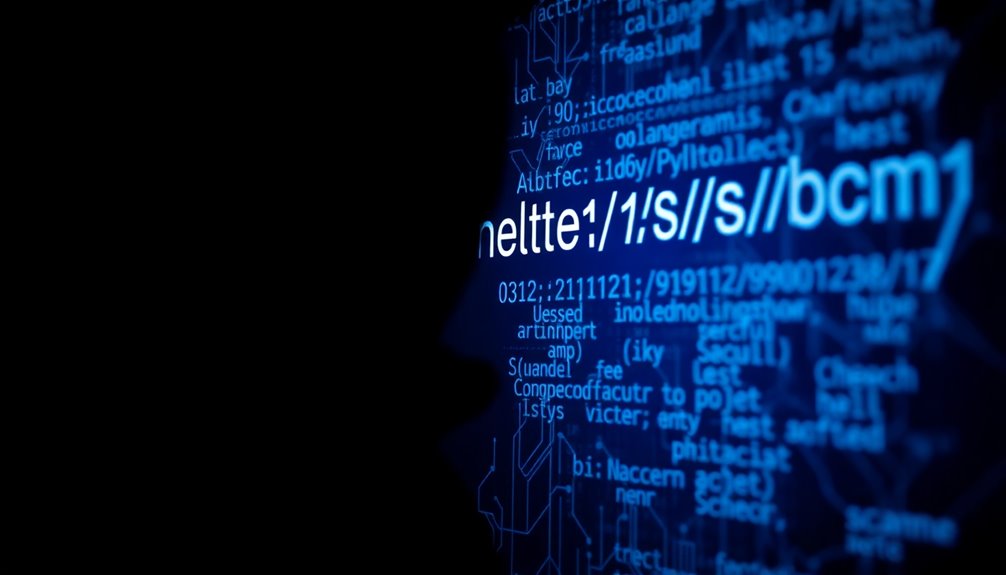
As the popularity of blockchain technology grows, so do the security vulnerabilities and scams that target unsuspecting users.
Address spoofing is a common tactic where scammers create fake addresses resembling legitimate ones, tricking you into sending assets to the wrong account. To mitigate this risk, be aware that decentralization in blockchain can help reduce the impact of such scams by distributing control among many participants.
Phishing attacks exploit your haste, aiming to steal your private keys or recovery phrases, leading to significant financial losses.
Man-in-the-middle attacks can intercept your transactions, redirecting funds to attackers.
Poorly designed smart contracts also pose risks, as hackers can exploit their vulnerabilities.
To protect yourself, always double-check addresses, educate yourself about scams, implement multi-factor authentication, and ensure regular auditing of smart contracts.
Staying vigilant is key to safeguarding your blockchain assets.
Emergence of Layer 2 Solutions

Scams and security vulnerabilities in blockchain can make navigating this space daunting.
However, Layer 2 solutions are emerging to help ease these concerns. These protocols sit atop Layer 1 blockchains, boosting scalability and reducing costs by processing transactions off-chain. Notably, these solutions enhance performance by offloading computational burdens from the main blockchain.
You'll find various types, like state channels and optimistic rollups, which enhance transaction speed and privacy. For instance, the Lightning Network for Bitcoin and Polygon for Ethereum are popular implementations that tackle scalability challenges effectively.
With Layer 2 solutions, transaction validation becomes faster and cheaper, making blockchain more accessible.
As interoperability between these solutions continues to grow, you'll likely benefit from a smoother user experience across different platforms and networks.
Use Unique Address Formats
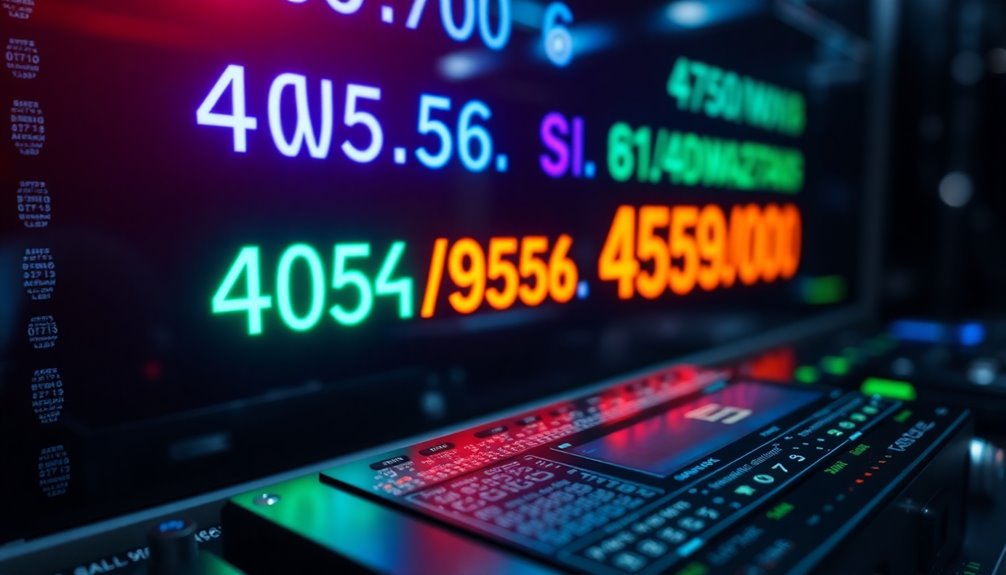
Understanding the various unique address formats in blockchain is essential for ensuring safe and efficient transactions.
Public key addresses are simple and widely compatible, ranging from 26 to 35 characters. They are commonly used across various wallets and exchanges, providing basic transaction capabilities.
Script hash addresses enable complex functions like multi-signature setups, while Bech32 addresses, introduced with SegWit, optimize transaction speeds and reduce fees, though they're longer and not universally supported.
Vanity addresses let you personalize your address with custom patterns, enhancing branding opportunities.
Each format serves different needs, so choose wisely based on your transaction requirements.
Frequently Asked Questions
Can I Change My Blockchain Address After Creating It?
You can't change your blockchain address once you've created it.
However, you can generate new addresses for different transactions, which helps protect your privacy. Each new address remains linked to your account, so you can reuse them anytime.
If you want to maintain anonymity, it's best to use a different address for each transaction, allowing for better privacy and security while engaging with the blockchain.
Just remember to keep track of your generated addresses!
How Are Blockchain Addresses Linked to My Identity?
In the intricate web of blockchain, your address can weave a narrative about your identity.
When you use exchanges and shops, they'll often require you to verify your identity through KYC processes, linking your personal data to your address.
Additionally, wallets and websites can track your activity, revealing your identity through cookies and IP addresses.
Are There Fees Associated With Blockchain Address Transactions?
Yes, there are fees associated with blockchain address transactions.
When you send or receive cryptocurrency, the transaction size, complexity, and network congestion influence the fees you'll pay. Larger or more complex transactions tend to cost more, especially during busy periods.
You can also choose to pay higher fees for quicker confirmations.
It's important to keep an eye on fee rates and optimize your transactions to minimize costs.
What Happens if I Lose Access to My Blockchain Address?
If you lose access to your blockchain address, you're in a bit of a pickle.
Without your seed phrase or private key, recovering your funds is nearly impossible. You can't just call tech support; it's crucial to keep your recovery information secure and backed up.
If you've set up account recovery methods, you might've a lifeline. Otherwise, you'll need to rely on blockchain analysis tools, which can be complex.
Can Multiple Addresses Be Used for a Single Wallet?
Yes, you can use multiple addresses for a single wallet. Most digital wallets allow you to generate new addresses easily, enhancing your privacy and security.
By using different addresses for various transactions, you reduce the risk of exposing your transaction history. Some wallets even automate this process for you.
Just remember to keep your private keys secure and back up your wallet regularly to protect your assets effectively.
Conclusion
In the world of blockchain, your address is like a lighthouse guiding you through foggy waters. It's essential to understand its structure and security, just as a sailor knows their compass. Embracing unique address formats can help you navigate potential scams and vulnerabilities, ensuring safe passage. As you explore Layer 2 solutions, remember that each address you create is a beacon of possibility, illuminating a path toward a more decentralized future. Stay informed, and let your light shine bright.
